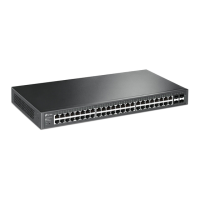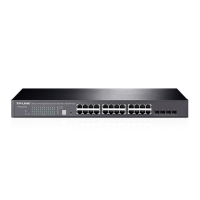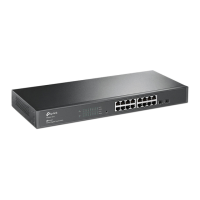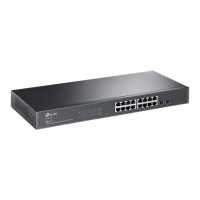Configuring QoS Class of Service Configuration
Configuration Guide
423
2
Class of Service Configuration
With class of service configurations, you can:
Configure port priority
Configure 802.1p priority
Configure DSCP priority
Specify the scheduler settings
Configuration Guidelines
Select the priority mode that the ports trust according to your network requirements.
A port can use only one priority to classify the ingress packets. Three priority modes
are supported on the switch: Port Priority, 802.1P Priority and DSCP Priority.
»
Port Priority
In this mode, the switch prioritizes packets according to their ingress ports, regardless
of the packet field or type.
»
802.1P Priority
802.1P defines the first three bits in 802.1Q Tag as PRI field. The PRI values are from 0
to 7. 802.1P priority determines the priority of packets based on the PRI value.
In this mode, the switch only prioritizes packets with VLAN tag, regardless of the IP
header of the packets.
»
DSCP Priority
DSCP priority determines the priority of packets based on the ToS (Type of Service)
field in their IP header. RFC2474 re-defines the ToS field in the IP packet header as DS
field. The first six bits (bit 0-bit 5) of the DS field is used to represent DSCP priority. The
DSCP values are from 0 to 63.
In this mode, the switch only prioritizes IP packets.
Specify the 802.1p to queue mapping according to your needs.
For 802.1p Priority, the packets will be forwarded according to the 802.1p to queue
mapping directly.
For Port Priority and DSCP Priority, the port priority and DSCP priority will first be
mapped to the 802.1p priority, and then mapped to the queue according to the 802.1p
to queue mapping.

